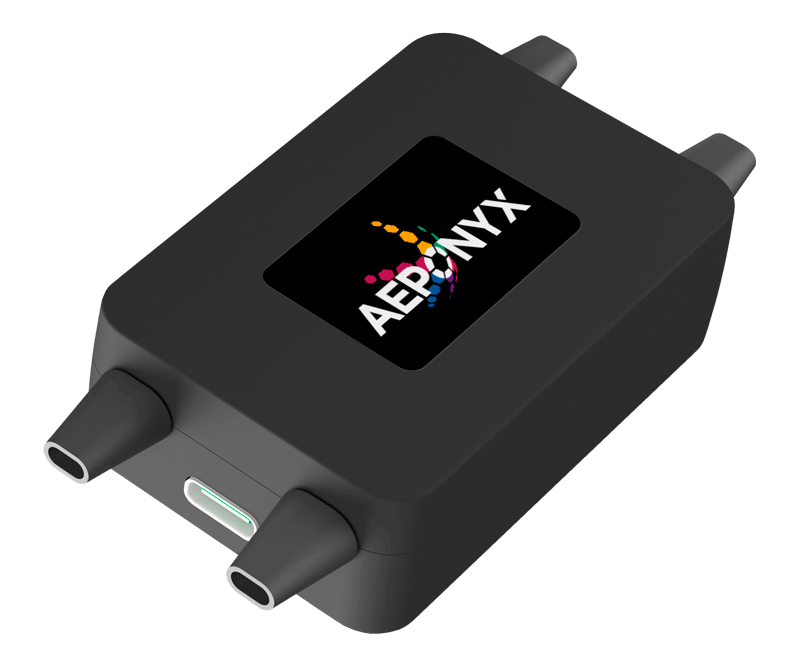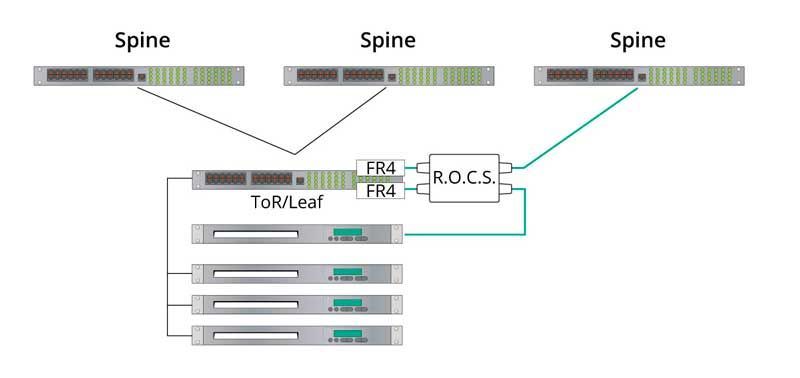Products
R.O.C.S.™ 2 -Resource optical configuration systems
As data centers evolve to meet the ever-increasing demands of today’s high-bandwidth applications, 400G technology is becoming an essential part of the infrastructure. The rapid adoption of 400G transceivers in data centers came with high failure rates causing significant downtime and costly unplanned outages for many businesses.
Deploying an optical transceiver failover solution can solve this issue in a practical and cost-effective way. Such a solution provides a redundant infrastructure that eliminates single points of failure, thus eliminating the risk of downtime caused by failed transceivers.
The key benefits of a fully optical solution are a significant reduction in power consumption, improved reliability, and improved scalability. Moreover, they are easier to install and require less maintenance, making them a cost-effective solution to the high failure rate of 400G transceivers.
Product overview
The R.O.C.S.™ 2 devices provide optical failover protection between a primary and a secondary transceiver. R.O.C.S. 2 allows users to establish redundant, high-speed optical links between two network nodes, ensuring that the primary link remains active while the secondary link is used as a backup in case of failure. The devices are designed to be seamless with minimal disruption to existing rack architecture.
Connectivity
Standard R.O.C.S 2 devices are designed to be compatible with most major brands of single and dual-fiber transceivers. They feature simplex or duplex LC connectors, low insertion loss, low return loss, and are available in single-mode and multimode versions. Power delivery and remote management are offered using USB connectivity to the host system.
Form-factor
R.O.C.S. 2 devices are delivered in a small factor of 7 cm × 5 cm. This small and compact device can be easily fitted into a tight space, allowing more room for other equipment in the rack. R.O.C.S. 2 are designed to be fanless and stackable, allowing multiple devices to be integrated into the same slot. Compared to traditional switches, the fanless design also means that R.O.C.S. 2 devices don’t suffer from heat, dust, and other environmental factors.

Benefits
Energy and cost savings
The economic benefits of deploying R.O.C.S. 2 are two-fold. Firstly, the automatic switching offered by R.O.C.S. 2 devices allows an optical link to be recovered quickly thereby reducing unplanned downtime and lost revenue due to such failures. Additionally, in many scenarios, a single R.O.C.S. 2 avoids deploying additional network switches and transceivers in the network. These networking equipment are expensive and have high power consumption, often exceeding several hundred watts.
Secondly, the small and compact R.O.C.S. 2 devices operate with an energy footprint of less than 1 W reducing both power consumption and cooling requirements. In AI and HPC, where systems run 24/7 at peak capacity and considering the high price per kWh, this translates into potential annual savings of millions of dollars.
Improved reliability
When the R.O.C.S. 2 devices detect anomalies, such as a drop in power caused by a faulty connection, overheating protections, or an interruption in the optical fiber link, they automatically switch to a backup transceiver. This helps to ensure a stable and reliable connection.
The device monitoring capabilities can notify the network operations team of these anomalies, allowing them to take corrective action before impacting service, thus minimizing downtime and ensuring uninterrupted services. Additionally, the remote management interface supports the ability to send and receive diagnostic data remotely and can be used to provide alerts when power levels reach predetermined thresholds.
Scalability
The support of a wide range of transceiver technologies offers a powerful solution for scaling the network quickly and cost-effectively. The use of R.O.C.S 2 optical switches when connecting multiple devices in the same network eliminates the need to invest in additional routing hardware.
Furthermore, the compatibility with various transceiver technologies makes it easier to deploy R.O.C.S. 2 devices in different locations and with varying types of network equipment, allowing for a more flexible and versatile network.
Use-case
Auto-failover in AI/HPC datacenter
The R.O.C.S. 2 switch can be used to create a failover system between multiple transceivers allowing high availability. The switch can be installed at the server level and/or at the ToR level.
Server-side
Recover the connectivity to a ToR switch when the primary transceiver of the server NIC card fails by switching to a secondary transceiver.

Switch-side
Recover the connectivity to a server when a downward transceiver fails by re-purposing an upward transceiver as a downward transceiver.




